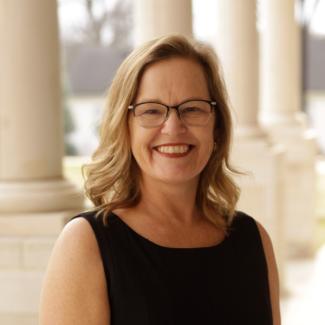Faculty-Directed Custom Programs
Breadcrumb
- Home
- Education Abroad & Exchanges
- Faculty and Advisors
- Teach Abroad
- Build a Faculty-Directed Program
Faculty-Directed Program Benefits
-
Professional Development: Broaden your academic and cultural horizons, gain international experience, and even establish connections with educators and researchers from other countries.
-
Tailored Curriculum: Design a unique curriculum tailored to your specific course goals, ensuring that your students gain the most relevant international experience related to the subject matter.
-
Enhanced Relationships with Your Students: Leading a study abroad program provides you with an opportunity to bond with your students outside the traditional classroom setting, fostering deeper connections and understanding.
-
Interdisciplinary Opportunities: Collaborate with colleagues from other disciplines to offer interdisciplinary programs abroad, enriching both the student learning experience and your own teaching methods.
-
Promotion of Global Citizenship: By facilitating international experiences for students, you play a vital role in preparing them for an increasingly globalized world, cultivating a more global perspective and understanding in them.
-
Increased Visibility and Recognition: Establishing and leading a successful study abroad program can raise your profile within your institution and your academic community, potentially leading to further opportunities and recognition.

Explore the Experience
Stage 1: Ideation & Statement of Intent
During this process, you'll explore the types of programs available to UK faculty, discuss goals, and develop an initial proposal for consideration.
1. Initial Ideation
Proposal and Conceptualization
Begin by identifying a unique destination and academic focus that aligns with your expertise and offers a valuable learning experience.
-
Program Relevance and Curriculum Alignment: The program should be aligned with the curriculum and resonate with the academic interests of students. If students see clear connections between the program and their academic or professional goals, they're more likely to participate.
-
Faculty Reputation and Engagement: The credibility and reputation of the faculty leading the program play a significant role. A well-respected and engaged faculty member can be a significant draw for students.
-
Program Duration and Timing: Whether it's a short-term summer program (most common), an embedded fall program (with travel over winter break), or an embedded spring term program (with travel over spring break OR in May following commencement), the timing should be convenient for the majority of potential participants.
-
Program Costs: Affordability can be a major factor. Ensuring that the program is competitively priced, or offering scholarships, grants, or financial aid options can make a difference in enrollment numbers.
-
Safety and Support: Assurances regarding safety, especially for programs abroad, and continuous support throughout the program can be crucial. Proper risk management and crisis response plans should be in place.
-
Cultural and Experiential Opportunities: If the program offers unique cultural or experiential learning opportunities that students can't get elsewhere, it can be a significant draw.
-
Past Success and Alumni Testimonials: Word-of-mouth from past participants can be a powerful tool. Alumni ambassadors can share their experiences and vouch for the program's value.
-
Logistics and Organization: A well-organized program with clear itineraries, accommodation arrangements, transportation, and other logistics can make it easier for students to decide in favor of participation.
-
Opportunities for Academic Credit or Certification: If students can earn academic credits, certifications, or other tangible credentials, the program becomes more attractive.
-
Inclusion and Diversity: Ensuring that the program is inclusive and caters to a diverse group of students in terms of gender, race, ethnicity, and other factors can enhance its appeal.
2. Alignment with Department and College
Speak with your department and college leadership about your intentions to submit a proposal to teach abroad. It’s important that your participation aligns with college level internationalization plans.
-
Program Vision and Relevance:
- How does this program support the department's and institution's broader internationalization goals and mission?
- Which specific objectives from the strategic plan does this program address?
-
Academic Integration:
- How will the curriculum of this program integrate with existing courses or degree requirements?
- Are there opportunities for cross-disciplinary collaboration?
-
Diversity and Inclusion:
- How does this program address issues of diversity, equity, and inclusion?
- Are there strategies in place to ensure diverse participation and representation?
-
Financial Model:
- Are there potential funding or grant opportunities to support the program?
-
Sustainability and Longevity:
- How will the program ensure its sustainability in terms of both enrollment and resources?
- What is the long-term vision for this program?
3. Meet with UKEA to Discuss Proposal
Key points EA will be looking for in a proposal:
- Attractive Destination: Program aligns with student interests in destinations. Programs in non-traditional locations are possible, however, they will need significant additional draws in order to recruit sufficient students to operate.
- Attractive Academic Opportunity: Program offers courses that appeal to a wide range of students. Faculty should strongly consider adapting existing 300-level courses that are required major or UK Core courses.
- Acceptable Cost: Program offers a “good value” financially to students. Considerations may include cost per-credit-hour, UK major/core vs elective offering, cost of living in host country, and intangible ‘value’ factors
- Acceptable Risk: Program is offered in a location that is reviewed to be a safe and acceptable destination by the UKIC or contains significant safety and risk management safeguards to make the destination reasonable for educational travel.
- Cultural Exchange: Program contains opportunities for students to engage in direct cultural exchange with the host community.
- Leadership: Program leader is prepared to facilitate cultural engagement and actively engage with students. Program director has strong ties, knowledge or significant experience in host destination and can speak the local language(s).
4. Submit a Statement of Intent
You'll work with the UK Education Abroad & Exchanges office to submit a formal Statement of Intent to offer a faculty-directed program.
If selected, you'll be invited to complete Stage 2 (below)
Stage 2: Development
In this stage you'll work with UKEA staff to select an on-site partner and finalize the program details
1. Finalize Development Details
Faculty will work closely with the UKEA Faculty-Directed development staff in order to collect all necessary information to develop a comprehensive RFP document.
Some of these items will include (but not limited to):
- Final program dates or window of available dates.
- Target program price.
- Minimum intended enrollment.
- Accommodation types (hotels, hostels, university accommodation, etc.)
- Program highlights, e.g. key non-negotiable in-country experiences.
- Academic site visits. Some of these may be developed by the faculty and some may be sourced by our in-country partner organization.
- Co-curricular activities.
- How many meals should be included in the program price.
- Any other significant requests.
2. RFP Selection
UKEA will issue an RFP, or Request for Proposal, for your study abroad program, which will be a formal document seeking detailed proposals from potential service providers or partners. The RFP will outline specific requirements, expectations, and criteria for the program, guiding interested parties in submitting comprehensive plans. This process will help UKEA select the most suitable provider or partner for the design and execution of the study abroad experience.
UKEA will typically select 2-4 well-reviewed organizations that
UKEA and the faculty member will make a collective decision on the final in-country partner organization.
The primary factors which will determine selection are:
- The per participant cost over length of time.
- The included academic activities and their relevance for the offered course(s).
- Services offered by the provider (pre-departure advising and orientation, transportation, meals, etc.).
- The ability for the provider to support students, particularly with regards to risk management.
3. Final Edits and Negotiation
Once a final in-country partner has been selected. The faculty and the UKEA Faculty-Directed team will continue to refine the day-to-day itinerary.
4. Program Page & Opening Applications
Stage 3: Recruitment and Applications
UKEA Responsibilities
Primary components UKEA will be responsible for:
- Program Page: UKEA will create a public Program page to contain all official program details.
- Application Management: UKEA will provide and maintain an application system for your students to submit applications for consideration and for faculty and university officials to review students for attendance.
- UKEA Website: UKEA will list your program on our major advising pages, which highlight specific programs that align with students academic major.
- Fall/Spring Study Abroad Fair: UKEA Will provide space and a contact card for your program at your college's study abroad fair table. In some circumstances, faculty may have received their own table on a space available basis.
Faculty Responsibilities
IMPORTANT: Education Abroad programs require a significant investment of time and effort to promote. EA will support you via fall/spring fair events, a web page, etc., but YOU are the primary recruiter for your program! Students generally apply for your program because they want to travel abroad with YOU.
Recommendations for Promoting your Program:
- Start early
- Ideally, you'll want at least two semesters of time to spread the word about your program.
- Create a program flyer or graphics
- Unfortunately, EA does not have the capacity to create flyers for every program, but we will support your creative outlet! If you want to create a flyer, PowerPoint, poster, email graphic, etc., the EA team will gladly review details for accuracy and give you feedback. We have national standards of good practice for promotion and recruitment and will help make sure you're following best practices.
- Target your classes
- Start or end each class with a single slide showcasing the destination, the activities, the culture or some interesting factoid. It doesn't have to be long, but must be done regularly. Again, students will apply for your program because they want to continue learning from YOU.
- Attend the EA fall/spring fair
- UK EA hosts a large student resource fair each fall and spring. Check with EA for the date/time and plan to be in-attendance. Students react to YOU promoting your program where you can showcase your excitement.
- Get social
- Utilize your departmental or college social media outlets. Start an Instagram account or a Facebook page for your program and post interesting content to pique student interest.
- Engage your alumni
- If you've directed a program before, ask your former student participants to spread the word. They can also be very effective and influential recruiters for your program!
- Branch out
- Unless your course has specific prerequisites, you can often find interest from other colleges/majors. Some programs only meet their minimum by attracting students across other disciplines.
- Students from any US accredited university can join your course as a visiting non-degree seeking UK student. If you have contacts at other institutions, ask them to share information about your program.
- Send your course flyer out to professional associations in your field, and ask for it to be distributed
Department Responsibilities
UK Departments should:
- Create a temporary holding course on the myUK course catalog. This course should follow guidelines outlined by UKEA for section numbering and whether the course should be locked for enrollment.
- Share your course via their departmental listserv and via any other means the department can promote your program to the departmental students.
Stage 4: Selection and Pre-Departure
Connect with Us
We are excited to support you and your program ideas. To connect with the Faculty-Directed Team, please contact faculty-directed@uky.edu.
Faculty-Directed Events
You can also check out the Statement of Intent application page for upcoming Faculty-Directed program events.

Katherine Mary "Kate" Meyer, E.d.D
Associate Director Education Abroad & Exchanges
Faculty-Directed Programs Director
859-323-2134

Madelyn Higdon
Faculty-Directed Programs Coordinator
Education Abroad & Exchanges
(859) 323-2114

Diana Howard
Faculty-Directed Programs Coordinator
Education Abroad & Exchanges
(859) 218-2472